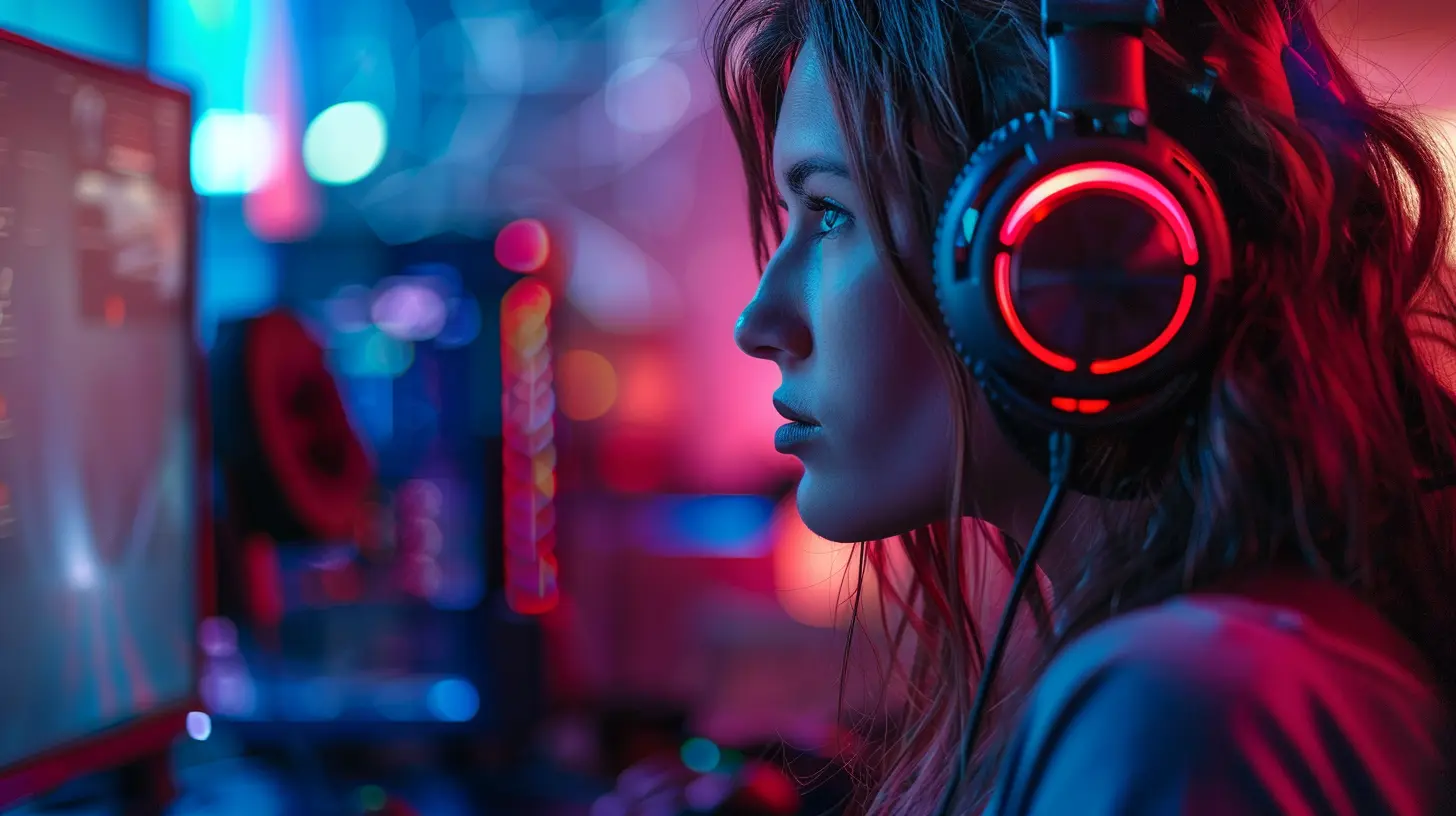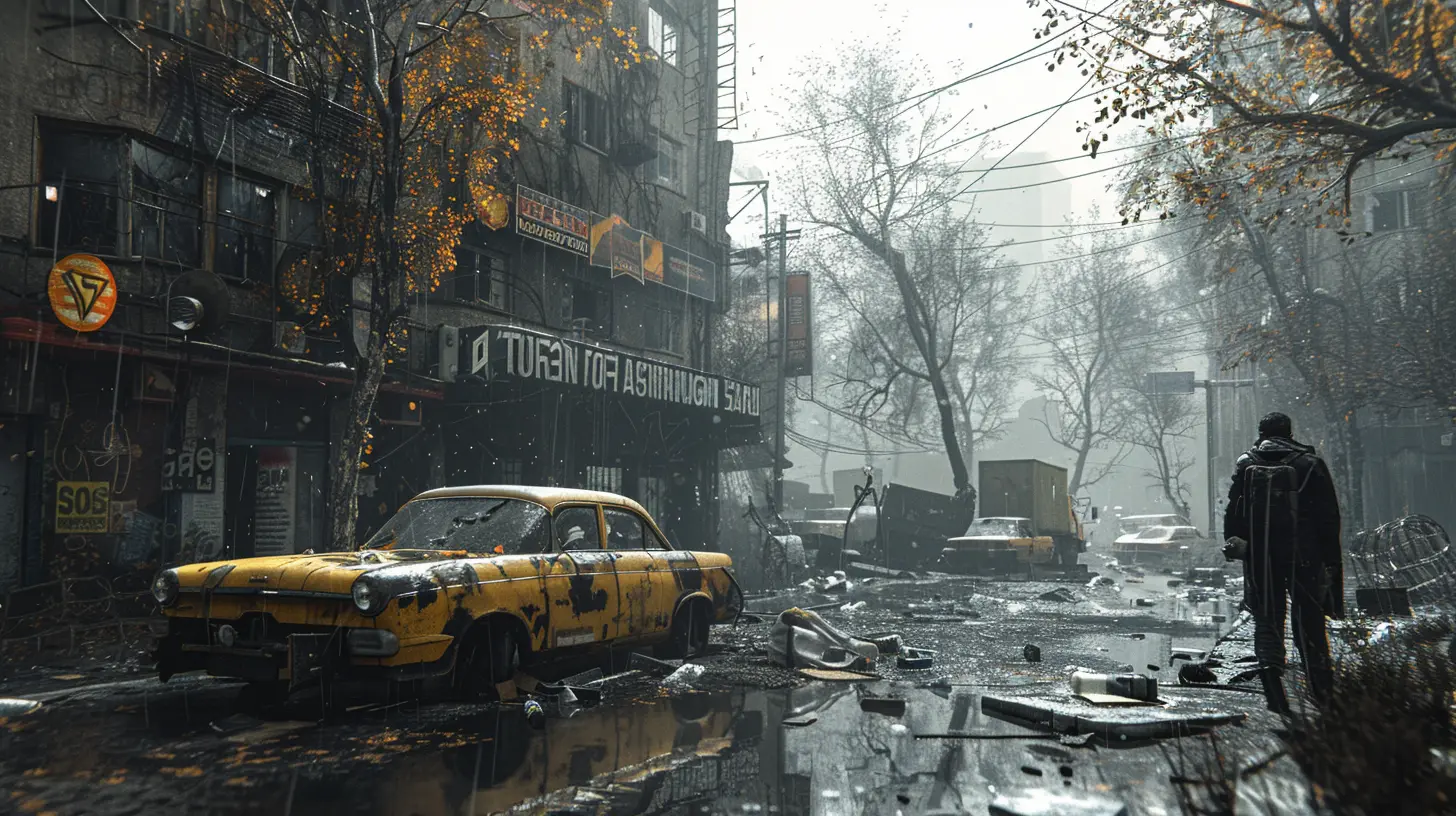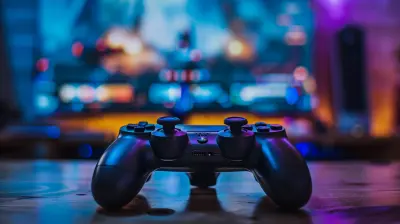Unlocking the Power of Anti-Aliasing in Modern Games
3 July 2025
Let’s paint a picture together. You fire up your favorite video game—it’s a graphically stunning masterpiece. But then, as you move your character closer to the vibrant city skyline, you notice something’s off. The edges of buildings and objects look jagged, almost like a saw blade. This visual oddity can yank us right out of an otherwise immersive experience, right? It’s moments like these where anti-aliasing swoops in like a hero to save the day. But what is anti-aliasing, and why is it such a big deal?
In this article, we’re diving headfirst into the world of anti-aliasing, breaking down the technical mumbo jumbo into simple, gamer-friendly terms. By the end, you’ll not only understand why it’s vital for modern games but also how to tweak it for the best experience. Ready to say goodbye to jagged edges forever? Let’s go!
What Is Anti-Aliasing?
Anti-aliasing sounds super techy, but don’t worry—it's simpler than it sounds. In layman’s terms, it’s a graphical tool used to smooth out those jagged edges (also called "aliasing") in games. You know, the ones that make objects in your game look like they’ve been outlined with a staircase.Think of it like ice cubes in your drink. Without anti-aliasing, the cubes are sharp and jagged, creating visual chaos. With anti-aliasing, it’s like melting those cubes into smooth, rippling water—calm and easy on the eyes.
Because games use pixels—tiny squares arranged in grids—to create graphics, it’s impossible for straight edges or diagonal lines to look perfectly smooth. Anti-aliasing comes into play by blending colors on the edge of objects, tricking your brain into seeing smooth lines instead of blocky, stair-step patterns. Cool, right?
Why Is Anti-Aliasing Important in Modern Games?
Picture this: you’re scaling a majestic mountain in a fantasy RPG. The sun is setting, casting golden hues across the world. Sounds magical, right? But then, jagged edges pop up and suddenly it feels less like an epic adventure and more like you’re squinting at a pixelated retro game. Yeah, not fun.Anti-aliasing is crucial in modern gaming because it elevates visual quality. It takes all those jagged lines and polishes them until everything is buttery smooth. This is especially important now that games are more detailed than ever. From ray tracing to ultra-HD textures, today’s games aim for realism, and aliasing can ruin that immersion faster than a surprise boss battle.
It’s not just about aesthetics, either. A smoother gaming experience reduces eye strain and makes long gaming sessions way more enjoyable. Because let’s face it—you’re not sitting down to play for just 30 minutes, are you? Anti-aliasing keeps those long hours easy on your eyeballs. 
The Different Types of Anti-Aliasing Techniques
Here’s where things get a little technical—but don’t worry, I’ve got you covered with analogies and examples to make it fun. There are several types of anti-aliasing, each with its own pros and cons. Let’s break them down:1. MSAA (Multisample Anti-Aliasing)
Think of MSAA as the tried-and-true classic. It’s been around forever and knows how to get the job done. MSAA works by sampling multiple points on an object’s edge and smoothing them out.It’s like cutting a piece of paper with jagged scissors and then sanding the edges until they’re smooth. MSAA is great because it provides good image quality without being too demanding on your system’s performance. However, it can struggle with complex scenes (think forests with lots of leaves).
2. FXAA (Fast Approximate Anti-Aliasing)
Meet FXAA, the speed demon of anti-aliasing. Unlike MSAA, which samples edges, FXAA applies a post-processing filter to the entire image, blurring out jagged edges. It’s fast and less taxing on your hardware, making it perfect for older rigs.The downside? FXAA can sometimes make things a bit too blurry, like looking at the world through a foggy window. Still, it’s better than no anti-aliasing at all!
3. TAA (Temporal Anti-Aliasing)
TAA is the brainiac of the family. It uses data from multiple frames to smooth out edges and handle motion like a champ. Imagine connecting the dots in a coloring book, but instead of random guesses, you’re following a roadmap laid out by previous pages.TAA provides excellent results but can sometimes cause "ghosting" effects, where objects appear to leave a trail as they move. It’s a small price to pay for stunning visuals, though.
4. SSAA (Super-Sample Anti-Aliasing)
SSAA is the golden standard—if your PC can handle it. It works by rendering the game at a much higher resolution and then scaling it down, creating ultra-crisp edges.Imagine painting a masterpiece on a giant canvas and then shrinking it down to postcard size. Every detail pops! The catch? It’s incredibly resource-heavy, so unless you’ve got a beast of a gaming rig, it might not be practical.
How to Adjust Anti-Aliasing Settings in Your Games
Okay, now that you’re an anti-aliasing pro, how do you actually use it? Most modern games let you adjust anti-aliasing settings in the graphics options menu. Here’s a handy guide to help you tweak it:1. Start by analyzing your machine. Got a high-end gaming rig? Go ahead and crank those settings up! If you’re rocking an older laptop, stick to lighter options like FXAA.
2. Test each setting. It’s like trying on clothes. Boot up your game, test different anti-aliasing methods, and see which one looks best without sacrificing performance.
3. Find the sweet spot. Some games combine techniques (e.g., TAA + FXAA) for optimal results. Experiment with combinations to see what works for your system.
Pro tip: If you’re playing on a lower resolution, anti-aliasing will make a bigger difference. On higher resolutions (like 4K), the pixels are already smaller, so aliasing is less noticeable.
Does Anti-Aliasing Affect FPS?
Ah, the age-old question: performance versus visuals. Yes, anti-aliasing can affect your FPS (frames per second), but the impact depends on the type of anti-aliasing you’re using.- FXAA and TAA are light on your system, so they’re great for maintaining smooth frame rates.
- MSAA and SSAA are more resource-hungry and can cause FPS drops, especially in demanding games.
It’s all about finding balance. If you’re running into choppy gameplay, try lowering the anti-aliasing quality or switching to a less taxing method. Trust me, a steady FPS is worth a few jagged edges.
Anti-Aliasing on Consoles vs. PC
Here’s a fun fact: anti-aliasing isn’t exclusive to PC gaming. Consoles use it too, though the options are usually baked into the settings rather than customizable. Modern consoles like the PlayStation 5 and Xbox Series X are powerful enough to handle advanced techniques like TAA, which is why games on these platforms look stunning even without manual tweaking.On PC, however, you have the freedom to go wild with settings. Prefer sharper visuals or smoother gameplay? You’re the boss!
Is Anti-Aliasing Still Needed in 4K Gaming?
Ah, the 4K question. When you’re gaming at ultra-high resolutions, individual pixels are smaller, which naturally reduces aliasing. Does that mean anti-aliasing is obsolete? Not quite.Games at 4K still benefit from anti-aliasing, though less so than at lower resolutions. Techniques like TAA are often used to smooth out finer details and improve overall image quality. It’s like upgrading from a pretty good cake to one with perfectly piped frosting. Can you eat the cake without frosting? Sure. But why would you?
The Anti-Aliasing Endgame
Anti-aliasing might seem like a small detail, but it’s a huge part of what makes games look and feel amazing. From transforming jagged edges into seamless visuals to keeping your eyes comfortable during marathon sessions, it’s the unsung hero of gaming immersion.Whether you’re tweaking settings to squeeze out an extra FPS or marveling at the polished beauty of a AAA title, anti-aliasing has your back. So, the next time you’re customizing your graphics, give it a little extra love—you’ll thank yourself later.
all images in this post were generated using AI tools
Category:
Video Game GraphicsAuthor:

Brianna Reyes
Discussion
rate this article
2 comments
Fable Kearns
This article effectively highlights how anti-aliasing enhances visual fidelity in modern gaming. By reducing jagged edges, it significantly improves immersion. However, the performance trade-offs should not be overlooked, as balancing graphical quality with frame rates remains crucial for an optimal gaming experience.
November 1, 2025 at 4:06 AM

Brianna Reyes
Thank you for your insightful comment! You're absolutely right—while anti-aliasing greatly enhances visual fidelity and immersion, balancing it with performance is key for an optimal gaming experience.
Stella McMaster
Anti-aliasing enhances visual fidelity in games by smoothing jagged edges, significantly improving overall graphics quality and player immersion.
July 20, 2025 at 3:10 PM

Brianna Reyes
Thank you for your insightful comment! You're absolutely right—anti-aliasing plays a crucial role in enhancing visual fidelity and immersion in gaming.


